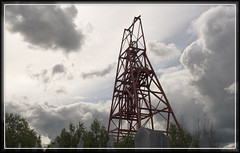
Queensland, Australia, is a globally recognized strong and competitive diverse mineral producing region. Mineral commodity exports are an important part of Queensland economy.
This has generated an extraordinary global demand growth for fertilizers. Phosphate is required for the production of fertilizers.
There are no substitutes for phosphate to produce fertilizers in high volumes. This should create a greater demand and higher prices for phosphate.
Current exploration activities show Queensland, Australia to have one of the larger reserves of phosphate rock in the world. High-quality and large volume deposits of phosphate deposits are available to be mined in the near future. The Queensland Government has commenced an $2.2 billion infrastructure development program to support mineral exports and coal mining with increased rail efficiency, port design, and power facilities.
Late last year DAP Phosphate prices jumped to US $719 per ton. Phosphate import demand increased 14% in 2008 worldwide. With the suggested demand for essential commodities, prices in an upward trend and the said Queensland Government infrastructure development and support, then investment in Phosphate resources looks very positive. Additionally, other major phosphate producing countries reserves are being steadily depleted with the ongoing high demand.
You Paid Your Dues, I Paid Mine- But Who Collected Those Dues?
The founding fathers of our country had little or no "school," as Gatto explains, but each gained a remarkable education from learning on their own.
In particular, 1852 was the first year that a law was effected making school mandatory for children in Massachusetts. The most powerful idea to make its way into modern schooling, though, was a school system based on the Prussian version. Children in Prussian schools were forced to go to school and were taught as little as possible, making them children for life with a near-total dependence on the state and superiors to make their decisions for them. Several more concepts found their way into the school system to effect an even more powerful ability to manage masses of children.
With the laws becoming compulsory, there was a purposeful injection into the school system of vast numbers of children who did not want to be there, causing a further dumbing down of education. Numerous layers of bureaucracy were added to school system, along with untold numbers of administrative positions, bloating the budgets of schools and creating more busy work for these grownup children. Second, modern schools provide a useful testing ground for new ideas that are brainstormed in the colleges, foundations, and think tanks.
According to Gatto, what all this adds up to is a broken school system that works remarkably like it should. No solution to the problem of school can be long-term as long as this type of economy exists.
To conclude, though, The Underground History of American Education is an exhausting yet intimate look into the modern schooling system.
Coal Workers Pneumoconioses (CWP) - Anthracosis, Silicosis and Byssinosis
Fibrosis develops at these regions. On prolonged exposure, progressive massive fibrosis (PMF) develops and this is the characteristic lesion in complicated pneumoconiosis.
Clinical features
Gradual onset of dyspnea and cough with purulent expectoration mark the onset of the disease. Dyspnea worsens when progressive massive fibrosis supervenes. Large nodular lesions develop in the lungs in subjects with rheumatoid disease who develop pneumoconiosis.
Silicosis
Prolonged exposure to dust-containing silica (silicon dioxide) gives rise to silicosis. The lesions produced by silica dust are similar to those produced by coal dust, but the lesions are larger. Sometimes silicosis produces acute respiratory manifestations with dyspnea and impairment of gas exchange in the alveoli.
Clinical features
Diffuse military or nodular lesions are found in simple silicosis. Asbestosis
Inhalation of asbestos dust leads to asbestosis. The raw material is obtained by mining. Eventually fibrosis develops around the asbestos particles and this obliterates the alveoli. Asbestos bodies are seen on histology of the lesions. Asbestos bodies may be demonstrable in the sputum. This condition also predisposes pulmonary tuberculosis.
Clinical features
Pleural thickening, pleural effusion, and calcification may be evident in some cases.
Byssinosis
Pulmonary disease caused by exposure to cotton dust, flax or hemp is termed byssinosis. Some subjects develop chronic obstructive airway disease. Management